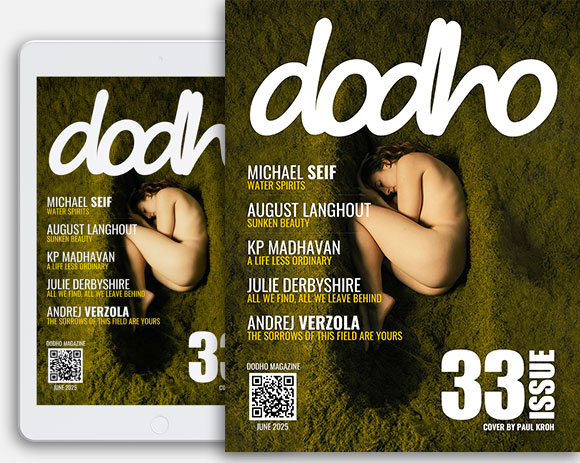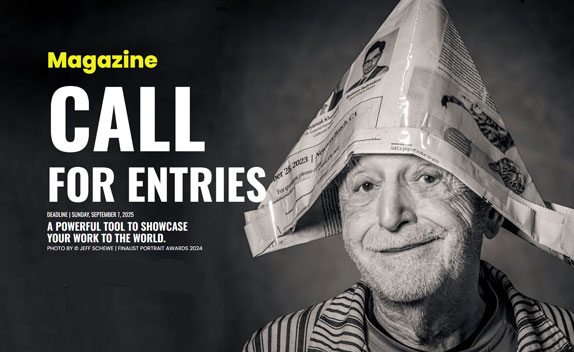Elliott Erwitt is a singular figure in the photographic landscape of the twentieth century and into the twenty first century.
His knack for condensing the complexity of the human condition into a single image, often with a twist of irony or humor, sets him apart from his contemporaries.
Born in Paris in nineteen twenty eight during a family stay in Europe, Erwitt grew up with a sensitivity to irony and the absurd shaped by the historical circumstances of his youth. The son of Russian Jewish parents, his family fled Europe before the Second World War and settled in the United States. That blend of European roots and an upbringing in the melting pot of New York forged in Erwitt a cosmopolitan vision aware of human contradictions, one that could find humor in situations that might otherwise seem banal.
From his early days as a freelance photographer in the nineteen fifties, Erwitt joined the Magnum Photos agency and found the ideal environment to develop his distinctive style. His work is, at its core, an experiment in the ordinary: streets, parks, hotels, train platforms. That selection of everyday settings is not accidental. By forsaking grand scenes or famous personalities, Erwitt relies on the power of simple anecdote to express complex ideas. When viewers look at an Erwitt photograph, they feel as if they have witnessed a unique, almost clandestine moment in which a truth about human nature is revealed. His humor, far from being loud or brash, is subtle yet it intensifies reflection rather than dampening it. Through his lens, a pair of dogs that look as though they are having a private argument, a solitary man in a trench coat seated on a bench, a child crying beside an oblivious tourist all converge in a consistent aesthetic and ethical stance.
Examining the chronology of Erwitt’s work reveals a progression from documentary practice to a more personal reflection. In his early years he worked as a photojournalist in places like Rwanda and the Soviet Union, assignments that confronted him with extreme situations. But instead of simply documenting suffering as a dramatic spectacle, Erwitt detected in those contexts a bittersweet humor: people’s expressions, the chance arrangement of elements in a frame, a gesture that seems out of place. As a result, the photograph ceased to be just an exotic record and became a mirror in which viewers recognized a shared humanity. It is not humor tied exclusively to American or European sensibilities but rather a universal humor grounded in the small incongruities of existence. That shift from social chronicle to personal introspection placed Erwitt in a unique position, distinct from the war reporter or political documentarian path his career might otherwise have taken.
Perhaps one of the most fascinating features of his work is the way he captures contrast and contradiction within a single frame. One of his most iconic images shows small breed dogs dressed in attire for a canine pageant, while in the background a large Labrador leans casually against a wall. That visual juxtaposition exposes with a knowing smile the absurd solemnity of dog fashion compared to the relaxed nature of a dog simply being itself. But it is not merely about showing the silliness of fashion; it is also a reflection of human vanity and our urge to impose order and labels on the wild. In many of his photographs, that subtle humor remains hidden until the observer notices it: a person walking with an umbrella inside a tunnel on a sunny day, an elderly man smoking on a bench while ignoring a modern sculpture that seems to glare at him, a mother gazing at her child while the child escapes to chase a balloon. Each image contains layers that reward curiosity.
Erwitt’s photographic language combines impeccable composition with an ever vigilant eye for the unexpected. His style, heir to the “decisive moment” tradition of Henri Cartier Bresson, emphasizes the split second of truth. Yet, unlike Bresson’s often melancholic or socially critical stance, Erwitt privileges the lighthearted wink. His photographs balance lines and shapes, light and shadow, but always leave room for the anecdote that defies expectation. Working in black and white gives him the restraint necessary for viewers not to be distracted by vivid colors and to focus on form, gesture, and expression. Even when color technologies emerged and spread widely, Erwitt remained loyal to monochrome, convinced that it provided the pure visual vocabulary needed to narrate the comedy of human life.
Reflecting on perception, Erwitt famously said that if something is funny it must be true. That statement encapsulates his belief that photographic humor is not an end in itself but a way to expose reality in all its ambiguity. When viewers laugh at the absurd scene captured, they also recognize an inner truth: that silliness existed before the camera framed it. Yet not everyone perceives the joke immediately, and perhaps that is another layer of his work. A less experienced observer might simply admire the composition, the texture, the fleeting nature of an instant without noticing the irony. For Erwitt, both reactions are valid: his work offers readings that range from pure aesthetic appreciation to deep reflection on the absurdity of social conventions. That deliberate ambiguity turns his photographs into mirrors that reflect back the viewer’s own perspective, which may be reluctant to admit what makes it laugh or feel uneasy about another person’s folly.
“Nothing happens when you sit at home. I always make it a point to carry a camera with me at all times…I just shoot at what interests me at that moment.”
Erwitt’s contributions also extend into commercial photography and editorial illustration. Over decades he provided covers for magazines, campaigns for brands, and opinion columns with images that, while retaining his ironic signature, fulfilled commercial demands. That ability to move seamlessly from corporate assignments to personal projects shows his understanding of photography as a flexible language. In advertising, his pictures do not try to sell an unattainable ideal. Instead, they insert a humorous element that humanizes the brand or concept being promoted. In a world flooded with ads that aim for perfection or heroic grandeur, Erwitt’s approach reminds consumers that all of us are vulnerable and prone to error and that laughter and contradiction belong to our shared experience. Those images, which could have been mere promotional visuals, become tiny auteur pieces that resonate beyond their immediate purpose.
Yet Erwitt’s trajectory is not limited to the black and white images that earned his renown. Since the nineteen seventies he explored color photography, thematic series, and long term projects like documenting life in Rome or in Palmdale California. In those series, his trademark humor takes a back seat to contemplative observation: Mediterranean landscapes, narrow cobblestone alleys, everyday gestures of locals. Even in this seemingly tranquil register, a spark of irony remains, as if humor in maturity chooses to lie slightly hidden, allowing the setting and local culture to frame a contained smile. The result is a richer narrative weaving together human and architectural landscapes, portraiture and social chronicle, always without renouncing the honesty with which Erwitt approaches his subjects.
“Balance of light is the problem, not the amount. Balance between shadows and highlights determines where the emphasis goes in the picture…make sure the major light in a picture falls at right angles to the camera.”
A distinctive feature of those endeavors is the sense of complicity he aims to establish with both subject and viewer. Unlike photographers who use portraiture to distance themselves from their subjects, capturing features to catalogue character, Erwitt places people in situations filled with humor and vulnerability. Consider his portraits of celebrities: Marilyn Monroe, Che Guevara, Dwight Eisenhower. Viewers normally see these personalities bathed in an aura of immortality. Erwitt places them in moments where they appear as fragile or playful as anyone on the street. This is not cruel mockery but a gentle deflation of pomp and circumstance. Photographing Monroe with a shrug or Eisenhower with a distracted look reaffirms the basic equality of all under life’s absurdities.
For historians of photography, Erwitt’s work serves as a counterpoint to the solemn and engaged vision of classic photojournalism and to the conceptual abstraction of much contemporary practice. His humor, rather than calcifying into a gimmick, remains relevant at a time when solemnity is equated with gravity and visual culture tends toward spectacle. Erwitt reminds us that life can be taken seriously while taking oneself lightly. In that sense, his legacy goes beyond art into ethics: it promotes a compassionate gaze that welcomes laughter as an essential part of our shared existence.
In early two thousand twenty five several galleries have revisited Erwitt’s oeuvre in exhibitions that explore the bond between humor and visual intelligence. For example a recent show in Madrid called “Laughter in Black and White” presented over one hundred photographs spanning from his first assignments for magazines to his most intimate personal projects. The success of the exhibition with critics and the public underscores the ongoing relevance of his approach. At a moment when the ceaseless flow of digital images risks homogenizing visual experiences, Erwitt’s work compels viewers to pause, to scan unlikely elements that seem trivial until they reveal deeper meaning. The laughter it provokes is not fleeting; it is an invitation to understand ourselves beyond stereotypes and staged poses.
This rediscovery of Erwitt highlights his influence on contemporary photographers seeking the comic nuance in reality. Names like Toni Catany, Delfino Sisto Legnani, and Mihaela Noroc cite Erwitt as a teacher and model. His mindful successors acknowledge in his technique the importance of classical composition, the casual symmetry, and the decisive moment but they also embrace the ethical lesson: photography can be beautiful while remaining compassionate and ironic. That combination is no easy feat; it demands from the photographer an empathetic disposition to connect with subjects without invading them, to laugh with them rather than at them. That balance between empathy and irony may be Erwitt’s greatest contribution: a recognition that authentic humor relies on accepting our shared vulnerability.
“Good photography is not about Zone Printing or any other Ansel Adams nonsense. It’s just about seeing. You either see or you don’t see. The rest is academic. Photography is simply a function of noticing things. Nothing more.”
Over more than seventy years Elliott Erwitt has shown that photographic greatness does not stem from solemnity or spectacle but from the ability to reveal both irony and tenderness in everyday life. His images remind us that the true portrait of human nature is built from small, almost ridiculous moments happening right before our eyes that, in their surface innocence, bear the weight of existence itself. Ultimately the delight of the mundane lies not only in a passing joke but in the affirmation that beauty and laughter coexist with daily routine, that humanity weaves itself into the commonplace and that a well trained camera held by someone willing to show compassion can unveil the ironic poetry of our everyday world.






